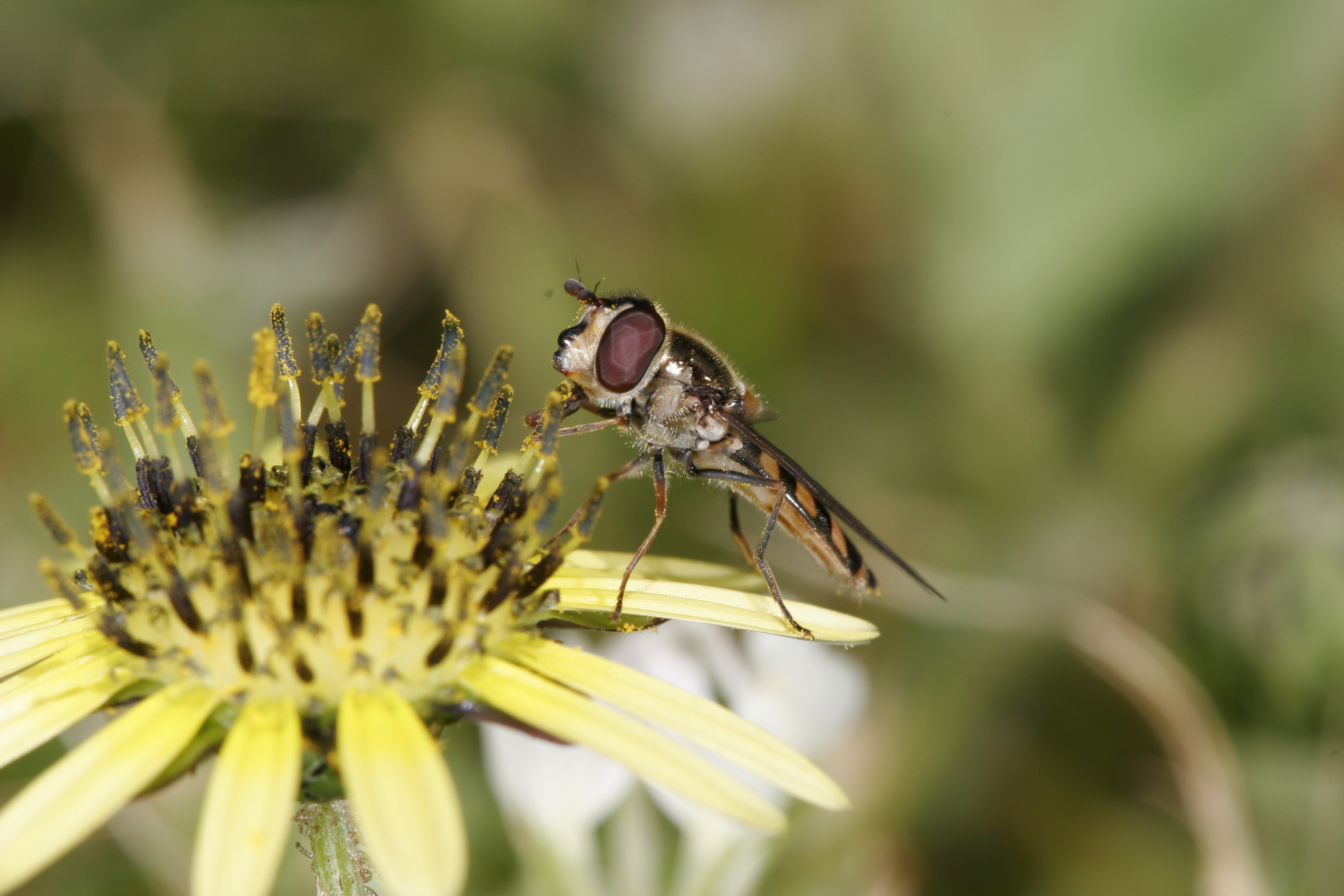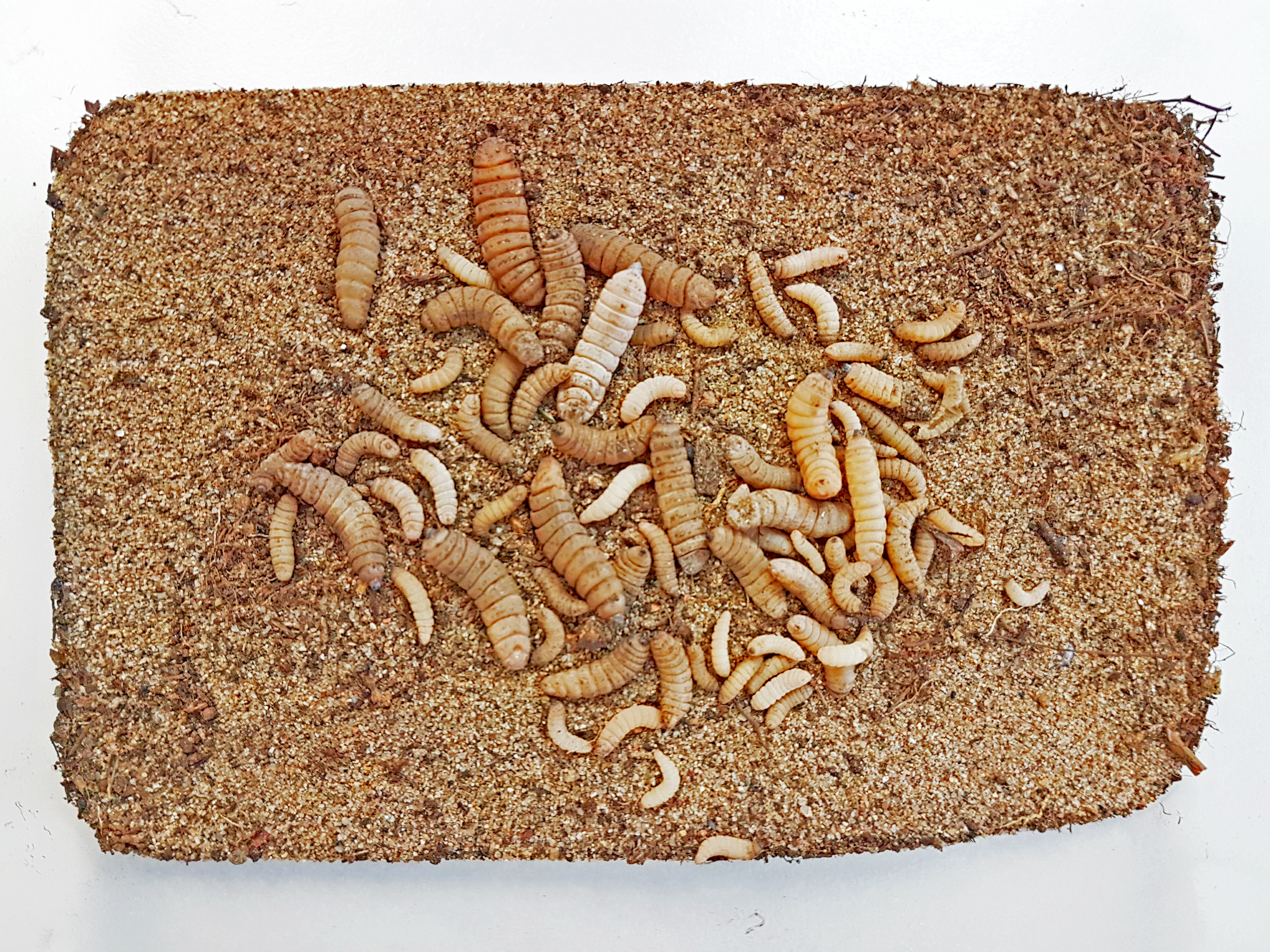
As their common name suggests, hoverflies (Syrphidae) are often seen hovering over flowers as they feed on the nectar.
Forget Spiderman, the real heroes are living in your very own gardens. They may be small (and sometimes a bit annoying – we’re looking at you, mozzies) but they are mighty helpful.
That’s right, we’re talking about insects. The original wingmen (see what we did there?).
‘Why are insects so great?’ we hear you ask. Allow us to enlighten you.
Pollination infatuation
Three quarters of world’s food crops depend on animal pollination. In fact, pollination from European honeybees alone is worth $4-6 billion in Australia each year. And what we do pay the bees? Nothing.
But, as the name suggests, they’re from overseas. So, what about our native pollinators? We’re only starting to discover our native insect pollinators. And they aren’t limited to bees. Beetles, moths and flies are all pollinators too.

Never skip leg day! This Leioproctus hairy colletid bee was collected from Kosciuszko National Park as part of our insect pollinator studies.
Researchers from the University of New England have shown that these native pollinators may be better at pollinating mango and avocado orchids than the honeybee. That’s right – the smashed avo is on our insect pals!
Even pests are great pollinators! Horse flies (the ones that bite) can pollinate up to 15 different native plant species, like eucalyptus, grevillea, and tee trees.
Power composter
Worm farms are great for reducing food waste and creating fertilisers for the garden. But did you know that flies are fantastic organic waste recyclers? And they’re already in your compost.
Flies like the black soldier fly larvae eat more than worms and recycle nutrients faster. They’re also a great protein snack for your chickens.

Soldier fly larvae are champions at breaking down compost, turning it into a form that’s easier for worms to digest.
Keeping pests at bay
Encouraging native insects can be good for your home. Providing a habitat for insect predators can reduce pest species that get into the house.
Native insect predators, like lady beetles, hoverfly larvae and spiders will help to keep pest species down. Spiders eat annoying mozzies and hoverfly larvae, which look like little hairy caterpillars, eat aphids.

Insect predators such as this ladybird can control pests just as well as pesticides. Image: Nancy Schellhorn
Insect smoothie anyone?
Many insects get covered in pollen drinking nectar from flowers. That’s how they do their work helping to pollinate our crops.
To identify our native insect pollinators, we’ve created a new technique similar to an insect smoothie. We blend the insect in a tiny mixer that releases the pollen off the insect bodies and from their stomachs. Then we can map the pollen’s genetic fingerprint and identify which plants the insects were feeding on. This technique has allowed to unmask surprising insect pollinators, including the pesky bush fly who turns out to be a marvellous pollinator.
Now that we’ve sold you on the super powers of insects, you can encourage more of them into your garden. Where you can, plant native species. These will help provide a home and food for pollinating insects, as well as native mammals and birds.

